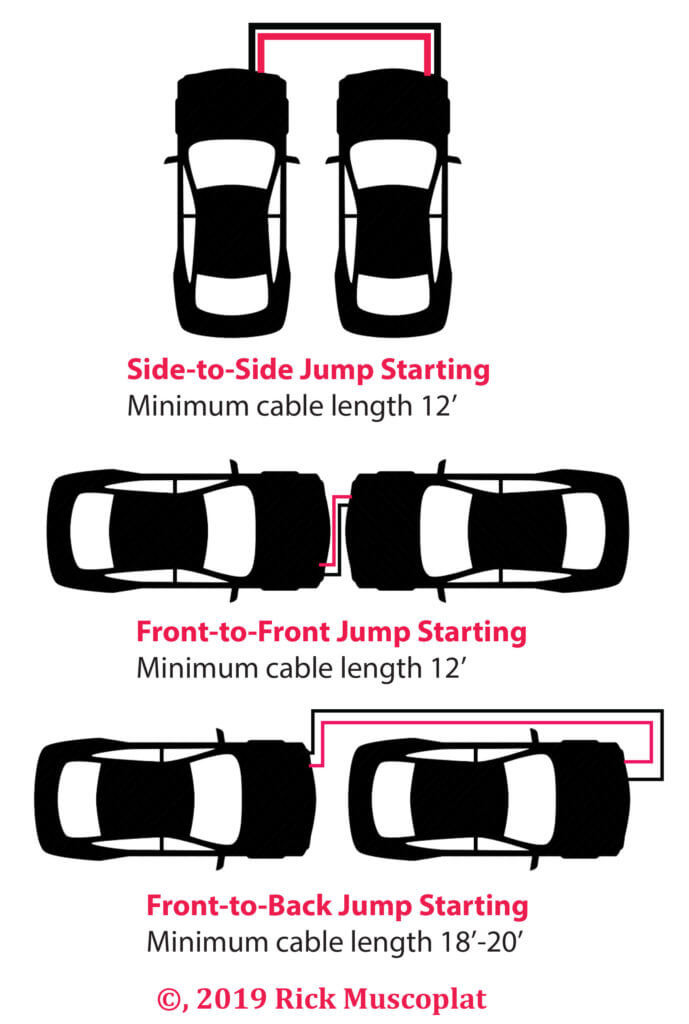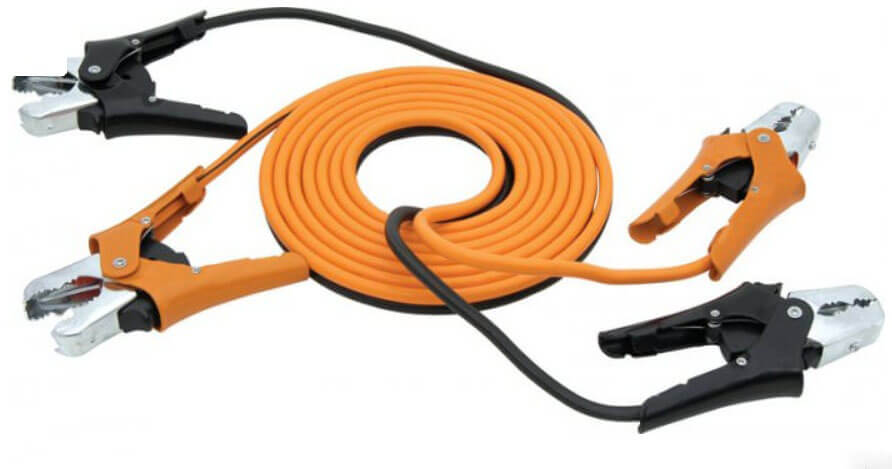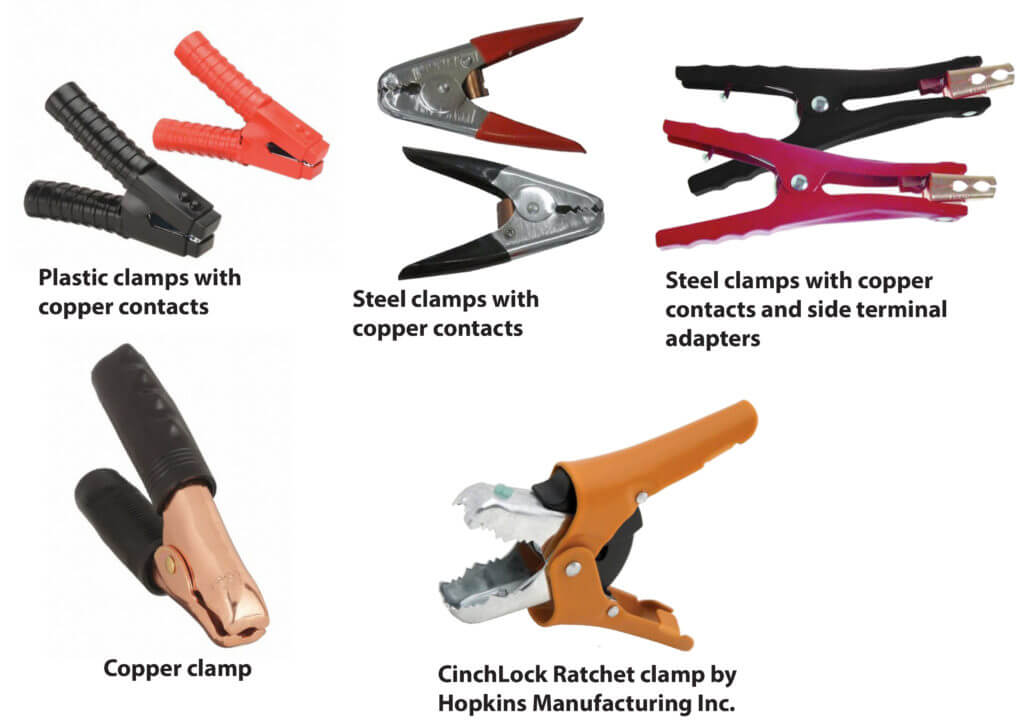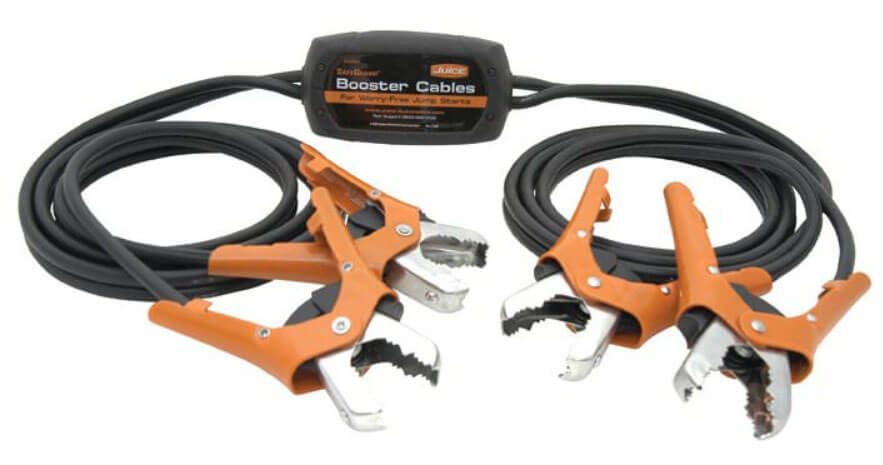How to buy jumper cables
How to buy jumper cables that work
Really good jumper cable sets are expensive. So you may be tempted to skimp since you rarely need them. But cheap jumper cable sets are made with thin cables that can’t carry much current. They’re often too short to reach. They have flimsy clamps that don’t stay put and the clamps are often made out of plastic that can crack and break in cold weather—just when you need them most. I’ll walk you through the definitions and terms and give you suggestions for gauge, clamp and cable length so you can buy jumper cables that work.
Best jumper cable length
Since you never know the situation you’ll be in  when you need jumper cables, it’s best to buy the longest cable length. Unfortunately, long cables with the greatest current carry capacity are also the most expensive.
when you need jumper cables, it’s best to buy the longest cable length. Unfortunately, long cables with the greatest current carry capacity are also the most expensive.
Here are some examples of the cable length you’ll need if you’re jump starting side-to-side, front-to-front, and front-to-back.
As you can see, a short length cable set works fine if you’re jump starting side-to-side or front-to-front, but they’re useless if you have to jump front-to-back. In that case, you’ll need at least 18′ cables.
How often will you have to jump front-to-back? Well, pretty often if you park in a parking lot and there’s another vehicle in front of you and to the side.
What jumper cable gauge do you need?
Wire gauge numbers are counter-intuitive; the smaller the number, the LARGER the gauge. The larger the gauge, the more amps the wire can carry. How many amps to you need? Well, here some information on that.
How many amps are needed to jump-start a car?
A diesel engine requires more amps to start than a comparably sized gasoline engine. Small (2.0L) diesel engines require around 400-amps to power the glow plugs and starter, while a 2.0L gasoline engine only needs 60-200-amps. BUT that’s what the engines require in warm weather. Everything changes in winter because the oil is thicker and it takes more power to crank over a cold engine fast enough for it to fire up.
Then there’s the issue of the dead battery. The instant you connect jumper cables to the dead vehicle, you’re automatically starting to charge the dead battery. So the cables you choose must be capable of carrying the starting current AND the charging current.
As a general rule of thumb, buy jumper cables that can carry at least double the starting current; i.e. at least 400-amps.
But buying the proper gauge also depends on the length
A high amperage capacity cable increases your chances of starting the dead vehicle. So it pays to get the largest gauge possible. But that also costs more. On the flip side, why waste your money on a thin cable that might not start your dead vehicle? Where’s the savings in that?
Let’s say you have a pickup truck with a large engine and you’re looking at a 12′ 6-gauge 500-amp jumper cable set. Then you realize that 12′ really isn’t long enough to cover all the possible situations you might encounter, so you decide to look at a 20′ set. A 20′ 4-gauge jumper cable set can only carry about 200-amps. So you’d have to drop down to a 20′ 2-gauge jumper cable set to get close to the same current carrying capacity.
Next, look at the temperature specs of the cables
Jumper cables that remain flexible in extremely cold weather will cost more. What good are cheap cables that won’t uncoil when frozen? Make sure the cables are rated flexible down to at least -30°F.
Jumper cable wire composition
Cheap jumper cables are made from copper-clad aluminum. The best cables are 100% copper. Guess which one costs more? Guess which one performs better? Yeah, copper.
Tangle-free jumper cables are best
Tangle free jumper cables are formed as a single cable  so you don’t wind up with a mass of spaghetti wires when it’s freezing cold. Cheap jumper cable sets have separate cables. Avoid those.
so you don’t wind up with a mass of spaghetti wires when it’s freezing cold. Cheap jumper cable sets have separate cables. Avoid those.
Jumper cable clamps
Cheap jumper cable sets use plastic handled clamps with copper inserts. That plastic handles can crack and break in cold weather. The better clamps are either fully copper with insulated handles or steel with copper contacts.

Jumper cables with polarity protection
Jumper cable polarity protection is a great upgrade feature to protect against incorrect connection. Connecting jumper cables to the wrong terminals can cause blown fuses or even expensive computer damage. Incorrect polarity connections are the #1 cause of vehicle damage, so it pays to buy cables that won’t short out your fuses or damage your computers.

©, 2019 Rick Muscoplat
Posted on by Rick Muscoplat
